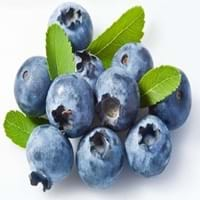Health Benefits
Cancer prevention, Cures gastro-intestinal troubles, Improves night vision, Improves stomach health, Prevents diabetes, Prevents high blood pressure, Reduces blood circulation problems
Anti-oxidant properties, Boosts immune system, Skin rejuvenation, Strengthening of bones
General Benefits
Fights against infections, Helps in weight loss, Prevents blood clotting in vessels, Treatment of urinary tract infections
Antiseptic properties, Cures headache, Removes waste from kidney
Skin Benefits
Anti-aging benefits, Nourishes skin, Protects against skin damage
Hydrates skin
Hair Benefits
Prevents hair loss
Good conditioner
Allergy Symptoms
Not Available
Chest pains, Rhinitis, Wheezing
Side Effects
Decrease in blood sugar levels, Diarrhoea, Dizziness, Headache, Internal bleeding, Stomach pain
Unknown
Best Time to Eat
As a snack in the late afternoon, Don't consume at night and before bed, Eat the fresh ones, avoid mixing with any other foods, don't eat after meal., Morning time (before lunch)
As a snack in the late afternoon, Don't consume at night and before bed, Eat the fresh ones, avoid mixing with any other foods, don't eat after meal., Morning time (before lunch)
Vitamin B5 (Pantothenic Acid)
Vitamin C (Ascorbic Acid)
Vitamin K (Phyllochinone)
Phytosterol
Not Available
Calories in Fresh Fruit with Peel
Calories in Fresh Fruit without Peel
Not Available
Not Available
Calories in Frozen Form
Not Available
Calories in Dried Form
Not Available
Calories in Canned Form
Not Available
Calories in Jam
Not Available
Calories in Pie
Not Available
Type
Berry
Tree fruit, Tropical
Season
Summer
Early summer, Early winter, Late fall, Late spring
Varieties
Dwarf bilberry, Piper, bog blueberry, Northern bilberry, Mountain bilberry and Oval-leaved bilberry
Rongrien, Chompu, Rapiah, Bingjai and Lebak Bulus
Color
Dark purple
Coral red, Yellow
Inside Color
Light Green
Greyish-white
Soil Type
Moist, Well-aerated
Clay, Loam
Climatic Conditions
Cold
Humid
Facts about
- Bilberries are used in manufacturing of alcoholic drinks.
- They are used to improve aromas of sorbets.
- The green extract of it's leaves is used in textile industry as natural dye.
- Oils extracted from its seeds is used to make soaps and candles.
- 'Rambut' means hairy in Malay.
- It makes the best hair mask.
- Seeds are edible and healthy too.
Top Producer
Japan
Thailand
Other Countries
Denmark, Finland, Iceland, Sweden
Africa, India, Indonesia, Malaysia, Philippines, Sri Lanka
Top Importer
United States of America
Singapore
Top Exporter
Chile
Thailand
Botanical Name
Vaccinium myrtillus
Nephelium lappaceum
Synonym
blaeberry, whinberry, European blueberry, whortleberry
Rambota
Subkingdom
Tracheobionta
Tracheobionta
Division
Magnoliophyta
Tracheophyta
Class
Magnoliopsida
Magnoliopsida
Subclass
Dillenhidae
Rosidae
Order
Ericales
Sapindales
Family
Ericaceae
Sapindaceae
Genus
Vaccinium
Nephelium
Species
Vaccinium myrtillus
N. lappaceum
Generic Group
Heath
Not Available
Difference Between Bilberry and Rambutan
We might think that Bilberry and Rambutan are similar with respect to nutritional value and health benefits. But the nutrient content of both fruits is different. Bilberry and Rambutan Facts such as their taste, shape, color, and size are also distinct. The difference between Bilberry and Rambutan is explained here.
The amount of calories in 100 gm of fresh Bilberry and Rambutan with peel is 44.00 kcal and 69.00 kcal and the amount of calories without peel is Not Available and Not Available respectively. Thus, Bilberry and Rambutan belong to and category.These fruits might or might not differ with respect to their scientific classification. The order of Bilberry and Rambutan is Ericales and Sapindales respectively. Bilberry belongs to Ericaceae family and Rambutan belongs to Sapindaceae family. Bilberry belongs to Vaccinium genus of Vaccinium myrtillus species and Rambutan belongs to Nephelium genus of N. lappaceum species. Beings plants, both fruits belong to Plantae Kingdom.









